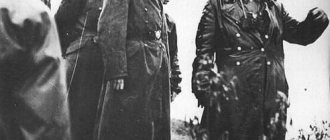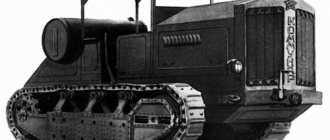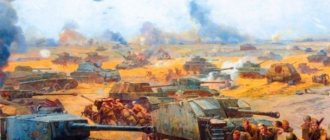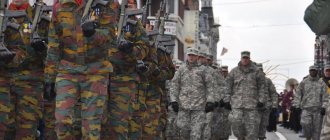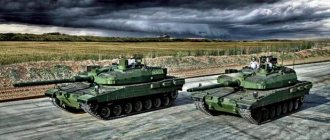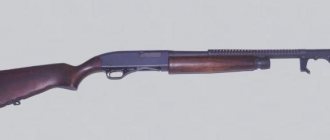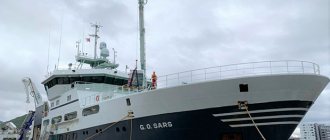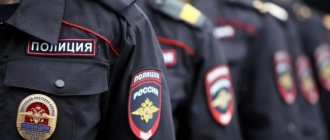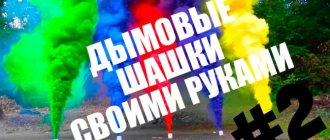According to the spheres of influence and activity, the Russian Armed Forces are divided into three types: the Navy (Navy), the Aerospace Forces (Aerospace Forces) and the Ground Forces. Each branch includes several branches of the military - military formations, united by a certain structure, technical support unique to them, characteristic weapons and an emblem.
A tank division is the main structural and tactical combat unit of tank forces that are part of the Ground Forces, along with motorized rifle troops, special forces, RVIA (missile forces and artillery), infantry and others.
Brief historical background
Armored forces begin their historical countdown with imperial Russia at the beginning of the 20th century, when foreign tanks were adopted. Serial production of domestic cars began in the 20s. The first tank divisions of the Soviet Army were formed in 1940.
With the beginning of the Great Patriotic War, the divisional organization of troops was replaced by a brigade organization. The main units were tank battalions and brigades. In June 1945, tank brigades were reorganized into regiments, and corps into divisions.
During the military reform of 2008–2009. The divisional structure was again replaced by a brigade structure. The reconstruction of tank divisions began in 2016. The first were the famous tank formations near Moscow - the Kantemirovskaya and Tamanskaya divisions.
“I believe that everything must be done to save the tank division...”
On June 25, 1941, the commander of the 3rd Mechanized Corps of the Red Army, Major General A.V. Kurkin, who was with his headquarters in the battle formations of the 2nd Tank Division in the area of the village of Raseiniai (Lithuania), plainly said on the air: “Help . Surrounded by"
.
A KV-1 heavy tank from the 2nd Tank Division that was knocked out and abandoned by its crew (https://rytufrontas.net)
At the start of the war, the 2nd Tank Division of the Red Army was part of the 3rd Mechanized Corps and was located in the vicinity of Kaunas. On June 23, tankers, together with rifle divisions, took part in a counterattack to repel the German offensive, but the very next day they were surrounded in the Raseiniai area by troops of the 56th German mechanized corps of General Manstein. Left without fuel and ammunition, and without contact with their command, the tankers, with their last strength, held back the onslaught of superior enemy forces and asked for help from their neighbors.
Another KV-1 from the 2nd Tank Division (https://rytufrontas.net)
On June 26, 1941, a telegraph communication session took place between the Chief of the General Staff of the Red Army, Army General G.K. Zhukov, and the Commander of the North-Western Front, Colonel General F.I. Kuznetsov. Describing the state of affairs in his sector of the front, Kuznetsov reported to the Chief of the General Staff about units and formations, the fate of which in the first days of the war was unknown to the center. Here is the content of paragraph No. 8 of General Kuznetsov’s report to Zhukov:
“The second tank division is in a difficult situation in the Rossiena area. Without fuel, surrounded. I took measures to help them, but I don’t have heavy aircraft to drop fuel... I would ask for transporter aircraft to transport at least a small amount of fuel.”
.
A German self-propelled howitzer SIG-33 drives past a KV-2 heavy tank abandoned by the crew from the 2nd Tank Division (https://waralbum.ru)
On June 28, commander Kuznetsov again reported to G.K. Zhukov about the current situation. The Chief of the General Staff bombarded the commander of the Northwestern Front with questions, returning to the fate of the 3rd Mechanized Corps (due to the fact that the headquarters of the 3rd Mechanized Corps was surrounded along with the 2nd Tank Division, in telegraph correspondence the surrounded formation is alternately called the 3rd MK , then 2nd td):
“Where is the 3rd Mechanized Corps? Did you supply him with fuel as you intended?”
Kuznetsov replied: “
I sent 9 aircraft to Rossieni to contact the commander of the 3rd Mechanized Corps. Nothing was found. 7 aircraft have bullet holes from units hiding in the forests of Rossiena. It is not known whose units these are.”
Tankers of the 2nd Tank Division of the 3rd Mechanized Corps N. Ananin, S. Kashekin and F. Lazarev, 1941 (https://www.rkka.ru)
G.K. Zhukov informed F.I. Kuznetsov about what measures were taken to assist the soldiers of the 2nd Tank Division:
“It’s not clear what’s happening with the 3rd Mechanized Corps. According to your report, the main command abandoned 40 TB-3 planes with fuel at one in the morning, and now it turns out that planes are being shot down there. It is not clear why you have been silent until now. Apparently, after an hour, heavy aircraft must dump fuel. Who will it go to? At your personal responsibility. If there really is no 3rd Mechanized Corps there, immediately meet the heavy bomb carriers and return them to the airfield. If it is not possible to deploy them on the route, you need to immediately cover the area where TB-3s fly to drop fuel with fighter aircraft, maintaining air patrols until the TBs leave, otherwise the enemy will shoot them down. Give the order now and see to it that it is carried out. Immediately report the culprit of the false report to the 3rd Mechanized Corps for a report to Headquarters. Why didn’t you send a paratrooper or land a plane there to find out the reality of the location of the tank division? I'm ending the conversation. I demand that 2-3 paratroopers be dropped in order to search for units, to orient them and bring them into reconnaissance groups.”
A German tank Pz.Kpfw.35(t) of the 11th regiment of the 6th Panzer Division of the Wehrmacht drives past an abandoned T-28 tank of the 2nd Panzer Division (https://waralbum.ru)
Kuznetsov's response was as follows:
“We have different documents and different information about the 2nd Tank Division. We carried out reconnaissance and believe that she is still in the Rossiena area. But it was not possible to establish whether this is accurate. I believe that to save the tank division we must do everything, including dumping fuel.”
.
German PzKpfw III Ausf.Н, destroyed in a battle with tanks of the 2nd Panzer Division. Noteworthy are the frontal armor plates broken by heavy shells (https://waralbum.ru)
When this conversation took place, the 2nd Panzer Division no longer existed. On June 26, the tankers took part in the last battle, in which the division and headquarters of the 3rd Mechanized Corps were defeated, and the division commander, Major General E. N. Solyankin, was killed. The commander of the 3rd Mechanized Corps, Major General A.V. Kurkin, ordered the tanks, useless without fuel and shells, to be taken out of service, having first removed their machine guns. Weapons and grenades were distributed among the surviving fighters, and measures were taken to transport the wounded. Only two months later, having traveled a long way behind enemy lines, the soldiers of the 2nd Panzer reached the location of their troops. Then they learned that on July 16, 1941, the tank division was disbanded...
Assignment of divisions
Separate operational division
In the Russian Ground Forces, tank units together with motorized rifle formations constitute the main striking force.
During military operations, the main tasks of tank forces are:
- fire support for motorized rifle divisions (regiments, brigades) - during defense, otherwise the defense of lines;
- breaking through enemy defenses to the maximum depth of the territory - during attacking actions (offensive).
Due to their high firepower, strong protection, and ability for rapid maneuverability, tanks are used to carry out deep strikes on the main combat axes.
Structure and number of personnel
Tank troops (TV) consist of divisions and separate brigades of the same name, as well as regiments and battalions that are part of motorized rifle units (divisions, brigades, regiments).
TV emblem on the buttonholes and shoulder straps of servicemen of the tank division
The division is part of a formation that is part of the Military District - a strategic formation that territorially unites military units, army institutions, and educational institutions of the Armed Forces.
The division is equipped with several types of troops. A military formation receives the name “tank” (“armored”) according to the prerogative branch of the troops included in its composition. The structural composition of a tank division is a combination of several tactical formations of different types of troops.
Staffing table of divisional units
| Regiment | Division | Squadron | Battalion | Company |
| three tank | reactive | helicopter | intelligence | chemical protection |
| motorized rifle | missile | engineer-sapper | ||
| two artillery | repair and restoration | |||
| anti-aircraft missile | health | |||
| electronic warfare | ||||
| material support | ||||
| communications |
All units belong territorially to the same military district. During martial law, the district is called the front. Russia is divided into four districts, according to geographical division: Western, Eastern, Central and Southern. According to the staffing table, the division commander (divisional commander) corresponds to one of the highest officer ranks - major general. The divisional deputy commander has the rank of colonel.
The number of personnel (officers, warrant officers, sergeants and foremen) is not the same for all divisional formations and varies from five to twenty-two thousand military personnel. Civilian personnel of military units - persons working under an employment contract in certain positions - are not considered personnel.
Unsuccessful intelligence arguments
According to the recollections of the head of the operations department of the headquarters of the tank division, Viktor Rozhnyatovsky, the new division commander preferred a tough authoritarian style of command, but at the same time did not have the strength to defend his opinion before his superiors.
When the division's reconnaissance officers (and since the time of brigade commander Semyon Krivoshein, the Brest tank crews had their own intelligence sources) reported about unusual actions on the border, Major General Puganov suggested that they not spread panic rumors. Although, to check them, it was enough to walk several kilometers to the west from the training ground where the tank crews were training. There, on the other bank of the Western Bug, heavy pontoons lay absolutely without camouflage, ready for deployment. And the haze of field kitchens and the constant roar of heavy machines were revealed by the accumulation of large mechanized units that were not very hidden. The division's intelligence chief, Major Vasily Parfenov, reported on the appearance of several dozen assault boats on the Western Bug River, as well as the complete seizure by the Germans of all types of boats from the Polish population living in the border area.
Along the entire section of the border from Brest to the Polish town of Slovyatichi, the Germans built high observation towers, on which there were observation officers with optical instruments throughout the daylight hours. Moreover, according to intelligence officers, officers were constantly changing. One got the impression that the Germans were planning to let the maximum number of their command personnel pass through these towers.
Technique
By the collapse of the Soviet Union, the number of tanks in service was 63,900. There were 15 tank divisions stationed geographically in the RSFSR. By 2005, the number of operating tanks was close to 23 thousand units. Over the next four years, this number was reduced by 10 times.
According to unclassified data from the Russian Ministry of Defense (Ministry of Defense), the actual armament consists of the T-62, T-72, T-80 and T-90 “Vladimir” tank models, as well as the new T-14 tank or the “Armata” universal combat platform.
Tank vehicles are in service with motorized infantry units, including the famous PT-76 light amphibious tank. Reserve combat vehicles (inferior to modern ones, but not losing their combat capabilities) are represented by the T-55, T-62 and T-64 models.
According to average data, the number of tanks in one division is up to 120 units. When asked how many tanks are in a tank division of a particular linear unit operating on Russian territory, the Ministry of Defense will not give an answer. This information is confidential.
The total number of active tanks (in service and in reserve) in the Ground and Coastal Forces is about 13 thousand. Most of them are T-72 Ural, various modifications (T-72A and T-72B, T-72BA and T-72B3) and T-80.
Attributes
Armored troops, like any other, have their own emblem and unofficial sleeve insignia. The patch on the left sleeve determines affiliation with the branch of the military, on the right sleeve - with a specific military formation (division, regiment).
TV RF sleeve patch
The lapel insignia - emblem - is located on the shoulder straps or collar of the uniform. There is also a TV emblem on the buttonholes and shoulder straps of servicemen of the tank division in the form of a tank.
The annual Tankman's Day was established in 1946 and was celebrated on September 11. In 1980, the date was adjusted to the second Sunday in September.
More dancing and less panic rumors
On June 15, 1941, the political department of the 14th Mechanized Corps recommended that the division commander not allow the families of the division’s commanding officers to be sent to the east due to their large numbers. Regimental Commissar Ivan Nosovsky feared the spread of panic rumors by the wives of commanders who misunderstood the current situation. And the medical service of the mechanized corps did not give permission to open a children's camp in the Kobrin region in the renovated building of an old noble estate. Even the military wives, who were accustomed to everything, began to express dissatisfaction with the current situation.
Commander of the 22nd Tank Division
The division command was recommended to improve cultural activities in the unit. Although this was clearly too much in the 22nd Tank Division. The head of the political propaganda department of the tank division, regimental commissar A. Illarionov, was a big fan of songs and dances. The division inherited from the Polish army an equipped club with a full-fledged auditorium, where the brigade and then the divisional DKA were located.
Junior political instructor A. Vasin, the head of the club, knew his job well. Therefore, more than two hundred young commanders and sergeants sang, danced, practiced circus arts, and played in patriotic plays, which allowed the division to hold the challenging Red Banner of the Western Special Military District for three years for the best amateur artistic performance.
The deployment of guns did not bother the Soviet command
And if under commander Colonel Kononov it was possible to find a balance between combat training and the political expediency of amateur performances, then with the appointment of Major General Puganov, the distraction of commanders and soldiers to participate in rehearsals and concerts during combat training became widespread. Tankers performed patron concerts not only in Brest, but also in Kobrin, Pruzhany, Bereza.
The commanders of the tank division actively sang and danced
On June 19, the political god of the Western Special Military Front, Corps Commissar Alexander Fominykh, came to the division for a party conference. He explained to the worried tank crews that they must read the TASS message of June 14, 1941 and not succumb to the provocations of enemies who dream of quarreling the USSR with Germany. And the accumulation of German troops occurs due to the fact that the German command is preparing its troops for the invasion of England. The tankers left the conference in complete bewilderment, not yet knowing that in the next two days the level of illogicality of all events would begin to go off scale...
